Dale Abbey - Part
3 - Hermit's Wood
w/e 03 April
2005
All
this week's pictures were taken with a Kodak DX6490
 |
In Part 2 of this series we
focused on Moor Lane and concluded near the ford at the bottom
of Woodpecker Hill with a warning to take care whilst walking
up the hill as there are no footpaths on either side of the road.
We rejoin the walk further up Woodpecker Hill near the road junction
to Stanton By Dale. From here we will head back to The Village
across the fields and via Hermit's Wood.
|
 |
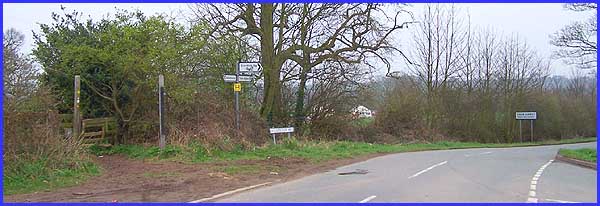
This view is looking back down Woodpecker Hill with the road
to Stanton By Dale* off to the right. Our route from here though
is to the left and over the stile. There is also a gate on the
left as the route is frequently used by horse riders as well
as walkers and ramblers.
*For more about Stanton By Dale, see my previous series about
that village starting here.
|
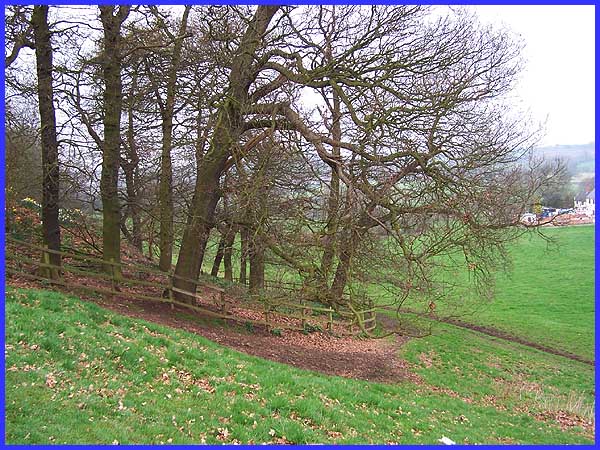
The footpath across the field can be seen running below Hermit's
Wood in this picture but a splash of colour in the trees tempted
us to make a slight diversion up the hillside.
|
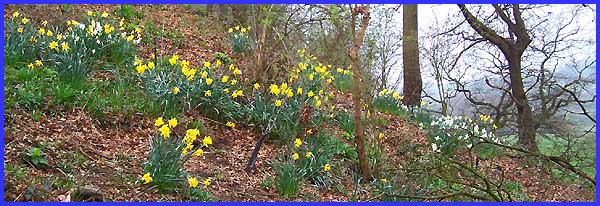
The colour emanated from flowers of the narcissi family and if
I had planned this series a little better, the predominant colour
would have been blue for the wood is well known for bluebells
and harebells. Hopefully when we return next month to complete
our walk through the wood, the flowers will be blooming.
|

Returning to the path across the field (extreme right), we can
turn our attention to the well documented story about the hermit
who inhabited the wood in the twelfth century and after whom
the wood is named. The tale of the Derby baker has been told
many times but it will not hurt to repeat it here. The baker,
Cornelius, had a vision sometime in the 1130s to go to Depedale
(the old name for the place) to find solitude and to meditate.
He found that solitude and made his home among the trees here.
|
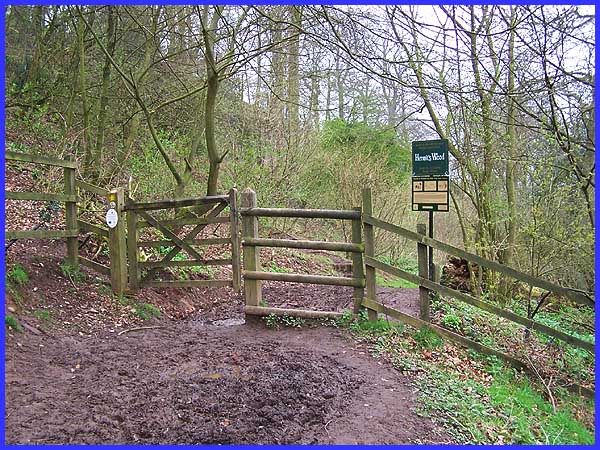
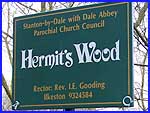 The path leads to a
gate into the wood where the information board tells us that
Hermit's Wood "is probably a fragment of the original forest
cover of Derbyshire. It is basically a dry, acid, mixed deciduous
woodland on a steep sandstone scarp slope." The board also
says that over 60 species of flowering plants, 24 species of
birds and many fungi have been identified within the wood and
it is acknowledged as a site of special biological importance.
Prior to our visit at the end of March, there had been a little
rain and the path at this point was quite muddy but picking our
way carefully towards the gate, we passed through and entered
the wood. The path leads to a
gate into the wood where the information board tells us that
Hermit's Wood "is probably a fragment of the original forest
cover of Derbyshire. It is basically a dry, acid, mixed deciduous
woodland on a steep sandstone scarp slope." The board also
says that over 60 species of flowering plants, 24 species of
birds and many fungi have been identified within the wood and
it is acknowledged as a site of special biological importance.
Prior to our visit at the end of March, there had been a little
rain and the path at this point was quite muddy but picking our
way carefully towards the gate, we passed through and entered
the wood.
|
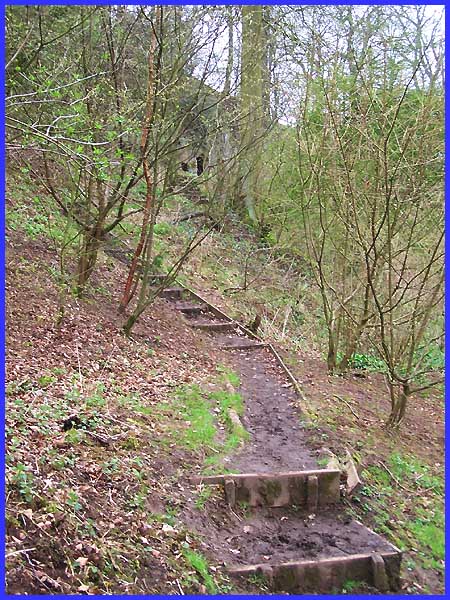
Immediately after passing through the gate, a flight of rough
steps leads up to the cave where Cornelius made his home. It
is now a scheduled Ancient Monument.
(Note - the muddy conditions made the steps and the path up
to the cave extremely slippery and anyone visiting in similar
conditions should take appropriate care).
|
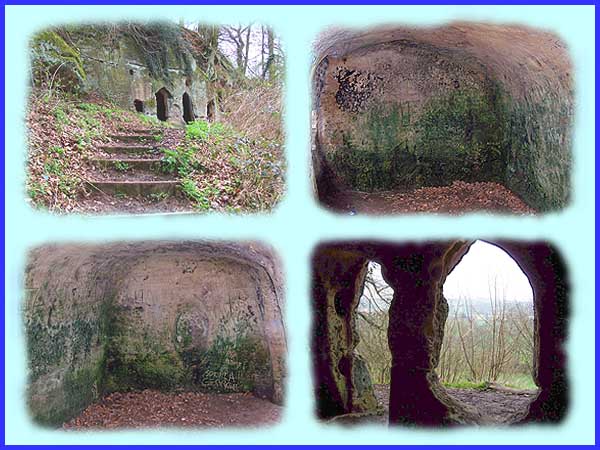
Cornelius cut out his cave from the sandstone cliff and added
a lean-to shelter outside for himself and his animals. The square
holes in the cliff face above the "door" and "windows"
(top left) show the position of the rafters of the lean-to. There
is a niche in the western end of the cave (bottom left) that
could have held a cross and candle thus becoming the Hermit's
chapel. The eastern end (top right) became his living quarters
while, on a clear day, there are good views from the front (bottom
right) over the village to the Cat and Fiddle Windmill.
|
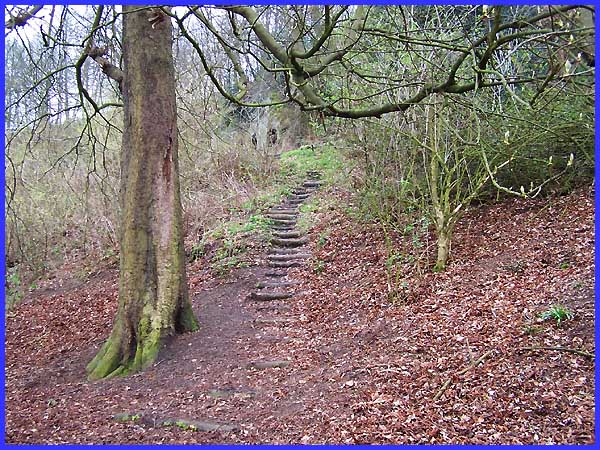
About 1150 Cornelius moved down the hill and built a chapel with
living accommodation on the site of the present Dale Abbey Church
which we shall see later and now, we too must follow in his footsteps
down another flight of (slippery) steps to continue through the
wood and on towards the village.
|

